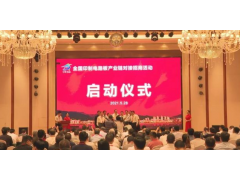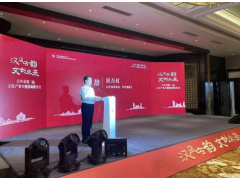Errol Moebius, President/CEO of IST Americas, believes that in terms of corrugated packaging printing, UV/UV LED inks are favored in single-pass printing presses. “The main reason for this preference is their curing system. Unlike water-based inks that require multiple prints, UV inks can complete the same printing task in one pass due to their instant cure properties. This instant cure property of UV inks allows for single pass Printing, especially for solid, single spot colors.”
For single-pass digital presses, there are three reasons for using UV or UV LEDs—a high-end finished product appearance is required, print volumes are low, and the substrate is plastic corrugated packaging, according to Fore. UV inks are also commonly used in multi-pass corrugated packaging printing. “UV inks are more commonly used on multi-pass presses because they are targeted at the short-run corrugated display market,” said Steve Linn, director of labeling and packaging at American Tex.
“UV printing on corrugated board is used in higher throughput modes. One of the reasons is to print more on demand or shorten the run – shorter runs provide higher image quality and full-color graphics.” Roland UV Jay Roberts, press product manager, agrees.
meet needs
UV printing for corrugated packaging applications offers a range of features to help users succeed. Manufacturers and converters demand reliability, versatility and dependability from these presses. “Users want reliable curing/drying of prints from a reliable system with low-to-zero maintenance and components that are operator-serviceable,” Kent shared.
Moebius agrees that reliability is a necessary attribute. “The main requirements revolve around achieving a consistent and repeatable process. Because these systems use 100% solids, daily production is not affected by humidity or weather conditions. Durability and consistency are both key factors, with Cost will inevitably become more important compared to water-based, mercury and LED curing systems.”
Versatility is another consideration, even more so for a print service provider rather than a manufacturer. "Print providers who use UV curing systems to produce corrugated packaging are most concerned about versatility. In order to be profitable, print providers want to use as little equipment as possible to complete as many applications as possible, such as printing on plastic and paper." Lin Eun added.
Hanulek listed reliability, reduced energy consumption, durability, durability and flexibility as the main requirements for users.
A compact device is also advantageous. “Being more compact means users can fit a machine on the factory floor and it requires less power, which could be a factor that opens up a way forward for placing single-pass presses in their facilities in a way that much longer machines cannot. That,” Kent explained.
Ken Paslay, product applications engineer at Mutoh America, said the real goal is to achieve fast printing at an acceptable quality level.
“Today’s packaging buyers are looking to achieve greater marketing value from their packaging cartons, and as a result, we are seeing increasingly complex and detailed information on packaging, as well as more vibrant colors. This trend coincides with another important factor (UV flat panel This combined with increased printing speeds has really transformed the packaging market," Roberts said.
technological progress
UV/UV LED inks and corresponding UV curing systems continue to evolve.
Hanulek said arc curing systems are being replaced by LED curing "due to economic benefits, primarily through productivity improvements and operating cost advantages."
"LED technology has been integrated into digital decoration from the beginning, creating a natural connection. Over time, LED systems have improved significantly, becoming more efficient and offering a wider range of monitorable parameters, thereby enhancing process control. As cost-efficiencies in power consumption between LEDs and traditional UV become more important, LEDs will likely gain more attention. However, the costs associated with consumables will also need to be aligned with this shift over time. As time goes on, it becomes a more influential factor," predicts Mobius.
The transition to LED curing lights is a huge benefit for corrugated packaging. “In particular, since corrugated deformation is amplified by heat, the low heat generated by UV LEDs is advantageous in the corrugated packaging market. For many users, cold curing allows them to print on a wider range of substrates, including Thick corrugated packaging and thinner micro-corrugated packaging,” explains Hanulek.
“With the big move from UV inks to UV LED inks, the systems used to cure LED inks deliver less heat on the corrugated packaging surface, which helps the board stay flat and unaffected by heat,” continued Lynn.
Paslay added that UV LED curing systems also operate at wavelengths closer to the visible spectrum, which greatly reduces the risk of eye damage.
In addition to curing systems, the inks themselves are changing—and in a good way. “UV inks designed specifically for corrugated packaging are flexible enough for folding and strong enough for creasing. They are fully repulpable and recyclable, contributing to the circular economy of corrugated packaging,” said Hanulek.
“With so many ink manufacturers producing UV inks and primers for single-pass machines, competition is quite fierce and ink costs are falling. This must continue for more to be achieved in the ultra-competitive corrugated packaging industry. Go with a single-lane machine purchase, especially for companies that run a lot of carton operations but don’t have as many display rack orders,” Kent advises.
water based ink
Despite advances in UV technology, water-based inks remain a significant player in digital corrugated board printing.
“The dominance of water-based inks is due to their cost-effectiveness, ease of application and availability of curing equipment. Additionally, for lower resolution printing on corrugated packaging surfaces, especially for heavier coverage areas, cost sensitivity is influencing this important factor in selection,” Mobius noted.
Health and recyclability are the two main reasons. "Recyclability is a big driver for water-based ink printing. Water-based inks play a vital role in food packaging as it relates to migration, which is a huge opportunity for packaging printing providers," Lynn explain.
Flexibility and longevity are other factors to consider. "Water-based inks are more flexible than UV inks. Water-based pigment inks have a longer life than water-based dye inks. Additionally, water-based inks are FDA approved for direct and indirect food contact." Konica Minolta Business Solutions America, Inc. representative explained.
Hanulek does not believe that “water-based inks will dominate digital corrugated packaging printing, at least in most of the state-of-the-art technologies (i.e. industrial single-pass printing).” The number of installed machines using UV technology is higher than that of water-based technology production lines (excluding China). "
While Hanulek acknowledges that water-based inks are well known and valued in the packaging industry (mainly because they are cheap and require no photoinitiator), when it comes to high-productivity printing, UV-curable inks compete with speed, drying time, energy consumption and durability. It still has advantages in terms of abrasion.
“Water is a very safe carrier, but needs to be absorbed or evaporated to dry. This is not as much of a challenge for slower consumer inkjet printers, but for high-speed printers, A complex high-energy drying system is required and often a pre-coat or primer on the substrate is required to control the dot gain of the ink, as water droplets form during drying. It also limits what additives can be added to the ink to improve performance, e.g. Adhesion to certain substrates has resulted in many water-based ink systems used for corrugated packaging printing being post-coated to protect against scuffs and scuffs,” Hanulek continued.
Another disadvantage of water-based inks is the required factory floor space. “The factory floor space required for water-based printing systems is much higher because of the long dry section of the machine, and the energy costs are also very high because these large dry sections are needed to evaporate the water in the ink,” Kent said.
Industry development
Driving users to adopt UV printing for corrugated packaging is a challenge, but it can be overcome.
First, it’s important to combat any misinformation. “Most water-based ink suppliers market to the industry that UV inks cannot be used in food packaging, which is not true. All major ink suppliers, including those that supply flexo inks to the corrugated packaging industry, will tell you that they “UV inks are ideal for food packaging. These ink suppliers continue to drive down costs, which, like other digital industries, is helping to advance single-pass digitalization in the corrugated packaging industry,” explains Kent.
“It is critical to educate end users about the practicalities of using UV or LED technology. This includes providing insights into the real-world operation of these systems. While UV inks may cost slightly more (approximately 10%), they are more efficient to use Higher. In addition, they have advantages such as lower energy costs, so educational campaigns are needed to highlight these advantages,” Mobius admitted.
Paslay points out that attention needs to be paid to the corrugated packaging medium itself. “In my experience, corrugated packaging printing is more about the media than the printing system. Maintaining the media in a way that it stays flat and straight is the biggest challenge. If that substrate can lay flat, the UV LED machine is very capable Printing on this substrate. A vacuum platform on a flatbed device can correct some of the cardboard warpage, but not all of it.”






